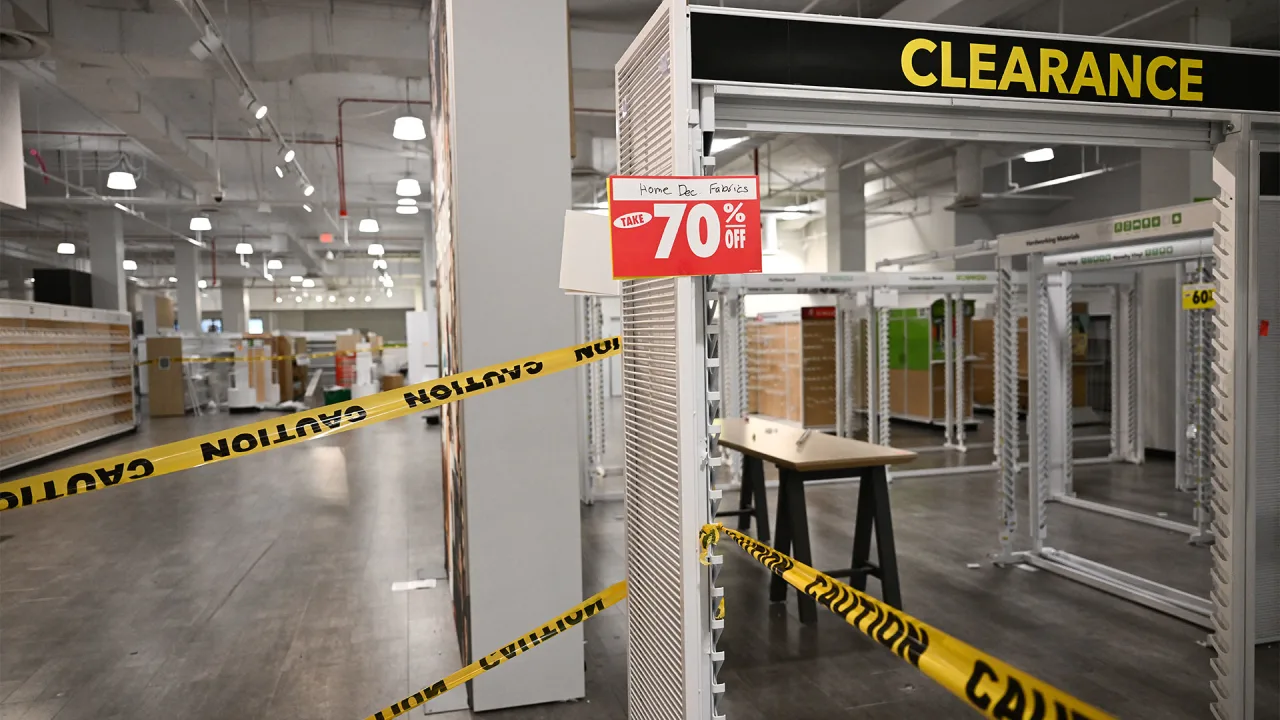I’m an emergency physician turned corporate leader. Here’s how I led our team after a employee’s suicide
My plane had just landed. I was anxious to get to the office after the departure of our team leader, a reduction in force culling hundreds of jobs just days before, and an organizational move to an unfamiliar part of the enterprise. As my team’s senior ranking member, I needed to help process everything together. I turned on my phone to a deluge of texts. “Please call as soon as possible,” my colleague wrote. “Is everything okay?” I responded. “No,” she replied. I called her as the plane taxied my crammed flight to the gate. “Priya,” she said, “Ashley died. She took her own life.” The words echoed in my head—strange sounds that made no sense and didn’t feel real. Ashley had been a valued member of the team, a well-loved and developing leader whose deep empathy, perpetual curiosity, and strong work ethic were constant reminders of the nature and value of our role within the company. I didn’t quite believe what I was hearing. Sobbing from the other side of the line pulled me back. I instantly donned the mantle of doctor. I had to help my friends and colleagues through this—and separate my own emotion from what needed to be done. It was going to be my job to tell the rest of my team. As an emergency physician, I was the one who told people their loved ones had died. I never expected to do the same in corporate America. And despite working for a healthcare company, I’d soon learn I’d have to do it with little support. The systems I was used to in the hospital were not in place here. Every Company’s Duty We live in volatile times. Suicide rates in the U.S. spiked 36% over the past two decades, with nearly 50,000 deaths in 2023 alone. Across the country, job stability is tenuous, risking employer health insurance coverage. Mental health services are beyond capacity. Amid billions slashed in mental health funding and threats to Medicaid coverage, the situation will likely worsen. These tragedies impact the workforce, though precisely how depends on the level and caliber of systems-level organization and preparedness. Even in healthcare companies, clinical expertise and informed leadership can be systemically lacking. When I ran into this absence of coordinated systems, I used skills honed in the emergency department—through treating gunshots, heart attacks, and COVID-19—to help my team. But what if corporate America turned lessons from emergency medicine into a systems-level approach to suicide? We might turn tragedy into psychological safety—improving employee loyalty, productivity, and longevity—to the benefit of the business. Here’s how. 1. Build a Coordinated Team and Established Process When a patient presents to the emergency department in a critical state, the team springs into action. The doctor, nurses, and emergency techs focus on the patient, while security, social work, and pastoral care workers support loved ones. In crises, everyone has a role. Under high-pressure circumstances, a single decision could result in death. Protocols such as American Cardiac Life Support (ACLS) and American Trauma Life Support (ATLS) standardize our approaches and maximize opportunity for survival. Large companies should adopt crisis management protocols describing who and how they’ll support employees after suicide and other workplace traumas, instead of avoiding such in hope that suicide would be a rare event. Delineating processes, roles, and responsibilities mitigates variation and disorganization while enabling prompt response and engagement. That’s fundamental because failing to quickly address a suicide can increase misinformation, distrust, and anxiety. 2. Communicate Immediately and Clearly After communicating with her family, I wanted to tell my team about Ashley face-to-face, just as I would in the emergency department. I also wanted to secure resources should anyone need support. On the cab ride from the airport, I engaged our human resources team and asked for crisis counseling on-site. I reserved a private space on campus for the entire team to gather. Out of respect and dignity not only for Ashley but also for the team as a whole, it was critical that the news was shared in a safe space from a trusted source. Hearing such through the rumor mill would undermine the honor I held central to the process. Human resources teams and leaders should model dignity and respect—and not be the source of word-of-mouth spread. Death-telling is an evidence-driven process that includes a few key actions: gathering loved ones together, providing resources, and meeting people where they are, which means immediately setting context, using clear words such as died, and allowing time and space to process the information. A few hours after I got to the office, it was time. Given the recent reduction in force, I had to stave off my team’s top-of-mind fear. “First,” I said, “our jobs are secure.” Then I told them Ashley had died. “We don’t know all the details,” I said, “bu

My plane had just landed. I was anxious to get to the office after the departure of our team leader, a reduction in force culling hundreds of jobs just days before, and an organizational move to an unfamiliar part of the enterprise. As my team’s senior ranking member, I needed to help process everything together.
I turned on my phone to a deluge of texts. “Please call as soon as possible,” my colleague wrote. “Is everything okay?” I responded. “No,” she replied.
I called her as the plane taxied my crammed flight to the gate. “Priya,” she said, “Ashley died. She took her own life.”
The words echoed in my head—strange sounds that made no sense and didn’t feel real. Ashley had been a valued member of the team, a well-loved and developing leader whose deep empathy, perpetual curiosity, and strong work ethic were constant reminders of the nature and value of our role within the company. I didn’t quite believe what I was hearing.
Sobbing from the other side of the line pulled me back. I instantly donned the mantle of doctor. I had to help my friends and colleagues through this—and separate my own emotion from what needed to be done. It was going to be my job to tell the rest of my team.
As an emergency physician, I was the one who told people their loved ones had died. I never expected to do the same in corporate America. And despite working for a healthcare company, I’d soon learn I’d have to do it with little support. The systems I was used to in the hospital were not in place here.
Every Company’s Duty
We live in volatile times. Suicide rates in the U.S. spiked 36% over the past two decades, with nearly 50,000 deaths in 2023 alone. Across the country, job stability is tenuous, risking employer health insurance coverage. Mental health services are beyond capacity. Amid billions slashed in mental health funding and threats to Medicaid coverage, the situation will likely worsen.
These tragedies impact the workforce, though precisely how depends on the level and caliber of systems-level organization and preparedness. Even in healthcare companies, clinical expertise and informed leadership can be systemically lacking. When I ran into this absence of coordinated systems, I used skills honed in the emergency department—through treating gunshots, heart attacks, and COVID-19—to help my team.
But what if corporate America turned lessons from emergency medicine into a systems-level approach to suicide? We might turn tragedy into psychological safety—improving employee loyalty, productivity, and longevity—to the benefit of the business. Here’s how.
1. Build a Coordinated Team and Established Process
When a patient presents to the emergency department in a critical state, the team springs into action. The doctor, nurses, and emergency techs focus on the patient, while security, social work, and pastoral care workers support loved ones. In crises, everyone has a role.
Under high-pressure circumstances, a single decision could result in death. Protocols such as American Cardiac Life Support (ACLS) and American Trauma Life Support (ATLS) standardize our approaches and maximize opportunity for survival. Large companies should adopt crisis management protocols describing who and how they’ll support employees after suicide and other workplace traumas, instead of avoiding such in hope that suicide would be a rare event. Delineating processes, roles, and responsibilities mitigates variation and disorganization while enabling prompt response and engagement.
That’s fundamental because failing to quickly address a suicide can increase misinformation, distrust, and anxiety.
2. Communicate Immediately and Clearly
After communicating with her family, I wanted to tell my team about Ashley face-to-face, just as I would in the emergency department. I also wanted to secure resources should anyone need support. On the cab ride from the airport, I engaged our human resources team and asked for crisis counseling on-site. I reserved a private space on campus for the entire team to gather.
Out of respect and dignity not only for Ashley but also for the team as a whole, it was critical that the news was shared in a safe space from a trusted source. Hearing such through the rumor mill would undermine the honor I held central to the process. Human resources teams and leaders should model dignity and respect—and not be the source of word-of-mouth spread.
Death-telling is an evidence-driven process that includes a few key actions: gathering loved ones together, providing resources, and meeting people where they are, which means immediately setting context, using clear words such as died, and allowing time and space to process the information.
A few hours after I got to the office, it was time. Given the recent reduction in force, I had to stave off my team’s top-of-mind fear. “First,” I said, “our jobs are secure.” Then I told them Ashley had died.
“We don’t know all the details,” I said, “but we know she died by suicide.”
I fell silent, giving space for the shock and emotion that followed, while my own heart broke for everyone. As a close-knit team, sadness shrouded all of us, settling into the room. The air felt heavier. The silence was replaced by gasps and tears.
After some time, I made a simple promise: “I’m here for anything you need. We’ll get through this together.”
3. Provide Visible and Tangible Support
Suicide is a contagion. Exposure may increase the risk of suicidal thoughts, behaviors, and depression.
In the aftermath, companies typically provide information about employee assistance programs or counseling services to help people cope with grief. But merely pointing to resources rather than providing them can make the people processing shock feel overwhelmed. They may perceive it as absent support.
Postvention is a process designed to quash the contagion. It alleviates the effects of stress, helping survivors through immediate, short-term, and long-term responses.
Visible and strong workplace leadership, with a willingness to discuss and serve as an ongoing resource, is effective in postvention efforts. But when leaders neither acknowledge nor offer safety following the suicide of an employee, that void can feel dehumanizing and propagate stigma. “If an organization cannot talk about suicide,” experts have noted, “it cannot properly support those impacted by it.” Silence from leaders and HR can feel deafening—further undermining survivors’ sense of psychological safety and spurring feelings of isolation and neglect. Leaders who support collective mourning, through memorials or gathering events, connect people while dispelling stigma.
4. Help Managers Through It
As we began grieving, I did everything I could to give the team space and permission to care for themselves. I cleared noncritical work and nonessential meetings and absorbed parts of their workload. As a physician, I knew each person would have different needs, based on their beliefs, cultural norms, and behaviors.
High-pressure postventions usually fall to direct managers, who often have minimal to no training. They may overlook their own trauma and grieving process while tending to the needs of the team and the business.
While strict hierarchical structures pervade corporate culture, leaders, including those in HR, should break rank amid crises. They should reach out beyond their direct reports to support the larger team. The better trained and available HR leaders are, the more they can alleviate the pressures on any one manager.
5. Debrief, Learn, and Improve
Organized debriefings with leaders to review processes, execution, and opportunities for improvement are standard practice in medicine and for first responders. This not only allows for continuous quality improvement, but also provides an opportunity for various members to voice their personal experiences. Time and space from an acute event brings clarity and refinement.
Following the suicide of a colleague, an organized debriefing supports the long-term aspect of the postvention. This is a collaborative exercise, anchored in safety and humility and based in learning and a drive to improve. Through honest feedback and critical evaluation, processes can be honed and the company can benefit as a whole.
Helping Employees Heal From Crisis
At a time when systems across the U.S. appear to be crumbling, corporate America has a valuable opportunity to assimilate humanity and empathy. Through processes and protocols, organizations can navigate crises by nurturing compassion, vulnerability, and shared healing. That’s essential to employee wellness—which is, in turn, essential to engagement and productivity.
But systems can’t solve everything. Medicine’s most refined processes can’t prevent the guilt that plagues most survivors of suicide.
I still struggle with the questions. Had I seen Ashley in the emergency department rather than the workplace, could I have spotted a warning sign and intervened? Had I fully understood how deeply the reorganization disrupted her sense of safety, what might I have done to mitigate it? I’ll never have all the answers. I have only the lessons learned from a tragedy no leader wants to endure but for which every leader must prepare.
Ashley left an indelible mark on all of us, both in life and in her absence. The shock and grief may never be gone, and a disappointment in company culture may linger. But our team got through the crisis together—just as I’d promised.




















































































































































